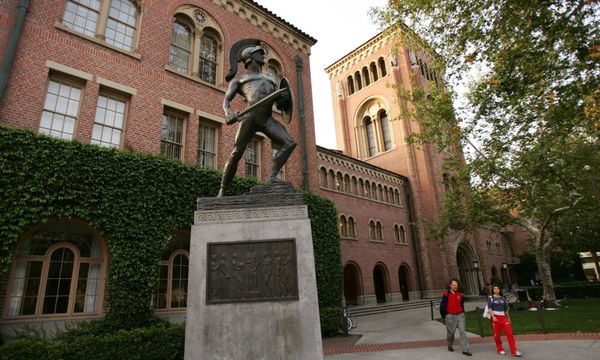
Supermarkets are increasingly pricing budget items at £1.25 rather than £1 as retailers balance attempts to draw in shoppers through bargain deals with stubbornly high grocery inflation.
The price point is now frequently the joint second-most popular price tag for a grocery item, alongside £2 and behind £1, according to the data firm Kantar.
Supermarkets typically use “round-pound” deals to sell budget items, but have been forced to raise prices.
Grocery inflation has eased to its lowest level this year but remains high, Kantar said on Tuesday.
Annual grocery inflation in the UK declined to 16.5% in the four weeks to 11 June, down from 17.2% last month and a record 17.5% in March. It remains at its sixth-highest level since the financial crisis in 2008. The biggest price rises were for eggs, cooking sauces and frozen potato products.
Fraser McKevitt, the head of retail and consumer insight at Kantar, said: “Traditionally, ‘round-pound’ prices have been attractive to shoppers, who find them easier to relate to and practical as well with no leftover change.
“But, with retailers eager to offer value and cash buying less popular, £1.25 has emerged as an increasingly important price point.”
The Kantar figures were released a day before the official UK data on inflation, which is expected to ease to 8.4% in May from 8.7% in April, when food and drink prices rose at an annual rate of 19.1%.
Rishi Sunak’s pledge to halve inflation this year is at risk from stubbornly high food inflation, which has kept the headline rate at a higher than expected level.
McKevitt said: “This is the lowest rate of grocery price inflation we’ve seen in 2023, which will be a relief to shoppers and retailers.
“But prices rising at 16.5% isn’t something to celebrate… Price rises are now being compared to the increasing rate of grocery inflation seen last summer, which means that it should continue to fall in the coming months, a welcome result for everyone.”
A survey for Kantar found that of consumers’ top five financial worries, rising grocery prices is the only one that they are more concerned about now than at the start of the year.
Almost 70% of households are either “extremely” or “very worried” about food and drink inflation, compared with just over two-thirds in January. It remains the second-biggest concern behind rising energy bills.
Consumers have been switching to supermarkets’ cheaper own-label lines to save money, where sales are up 41% compared with last year, and changing how they eat and cook, Kantar said.
McKevitt added: “People are thinking more and more about what they eat and how they cook as the cost of living crisis takes its toll on traditional behaviours.
“The most prominent change we’ve seen is that people are preparing simpler dishes with fewer ingredients.”
There were 4% fewer meals made using an oven in the last 12 weeks compared with the same period last year, while microwaved meals rose by 8%, and there was a rise in food prepared with toasters and grills.
Sue Davies, the head of food policy at the consumer group Which?, said high prices have been “hammering the household budgets of millions, including desperate families and people on low incomes who have been skipping meals for many months to make ends meet”.
She called on the government to get urgent commitments from supermarkets on stocking essential budget ranges in all their stores, particularly in areas where people are most in need, as well as make pricing much clearer so shoppers can compare prices and find the best value products.
As costs for producers and retailers have risen, the proportion of products sold for £1 has almost halved in a year, from 9% to 5%, according to Kantar.
With the advent of warm weather, consumers have been buying more ice-cream and mineral water, with sales up by 25% and 8% respectively last month, despite price increases of 20% and 17%.
Barbecue food has also gone up in price, with fresh sausage prices up 16% and fresh burgers 13% more expensive.
Aldi was the fastest-growing retailer in the past four months as people turned to the discount supermarkets in an attempt to conserve cash. The chain posted a sales rise of 24.6% to hit a record market share of 10.2%. Lidl’s sales growth was only slightly behind its fellow German discounter, increasing sales by 23.2% to take 7.7% of the market.
The eight biggest selling items for £1.25
Milk 2-pint bottle British semi-skimmed at Morrisons, Sainsbury’s, Tesco and Asda
Sharing bag of sweets Haribo Starmix 175g at Morrisons and Sainsbury’s
Bags of potatoes 2.5kg of ‘all rounder’ potatoes at Tesco or Just Essential potatoes at Asda
Chocolate biscuit bars Five pack of Bahlsen Pick Up chocolate biscuits at Ocado or Waitrose
Wrapped white bread 400g Warburtons Milk Roll from Morrisons, Tesco or Asda or Hovis Simple White bread 800g at Tesco
Chocolate block Aero chocolate sharing bar 90g from Waitrose, Sainsbury’s, Tesco and Ocado
Pack of button mushrooms 400g pack of closed cup mushrooms at Tesco
Chocolate multipack Six pack of Cadbury Dairy Milk little bars at Morrisons, Sainsbury’s, Ocado and Iceland







